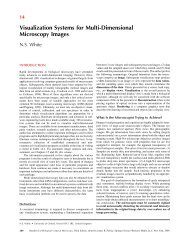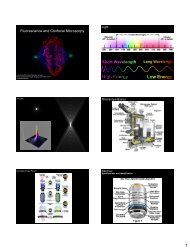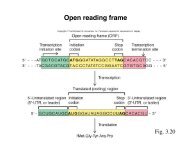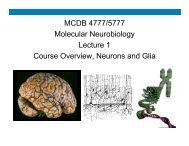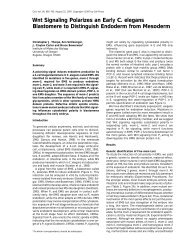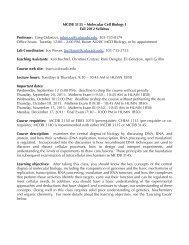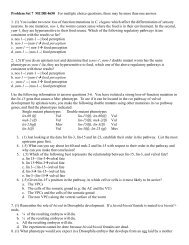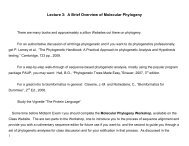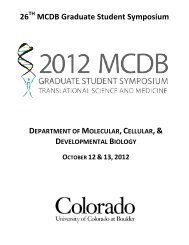Lecture 2: Describing Microbial Diversity: the ... - MCD Biology
Lecture 2: Describing Microbial Diversity: the ... - MCD Biology
Lecture 2: Describing Microbial Diversity: the ... - MCD Biology
Create successful ePaper yourself
Turn your PDF publications into a flip-book with our unique Google optimized e-Paper software.
10<br />
1) Chloroplasts recognized as derived from "Blue-Green algae" (now “cyanobacteria” – one of ~100 bacterial<br />
“phyla” (“divisions”, deepest clades in bacterial domain).<br />
2) Mitochondria were thought probably derived from some sort of bacteria.<br />
Note that <strong>the</strong> “endosymbiotic” origins for <strong>the</strong> organelles had been in <strong>the</strong> air since <strong>the</strong> 19th century -- for<br />
comprehensive overview of this history (and controversy) see J. Sapp, “Evolution by Association: A History of<br />
Symbiosis” (Oxford, 1994).<br />
D. Still, <strong>the</strong>re are many problems with this Five-kingdoms story:<br />
1) Relationships among microbes, both “procaryote” and eucaryote were speculative, at best<br />
2) There were no criteria to relate organisms between “kingdoms” (even between e.g. phyla of animals)-- a<br />
universal phylogeny was impossible.<br />
3) Implicit timeline remained -- “procaryotes”, “protists” “primitive.”





